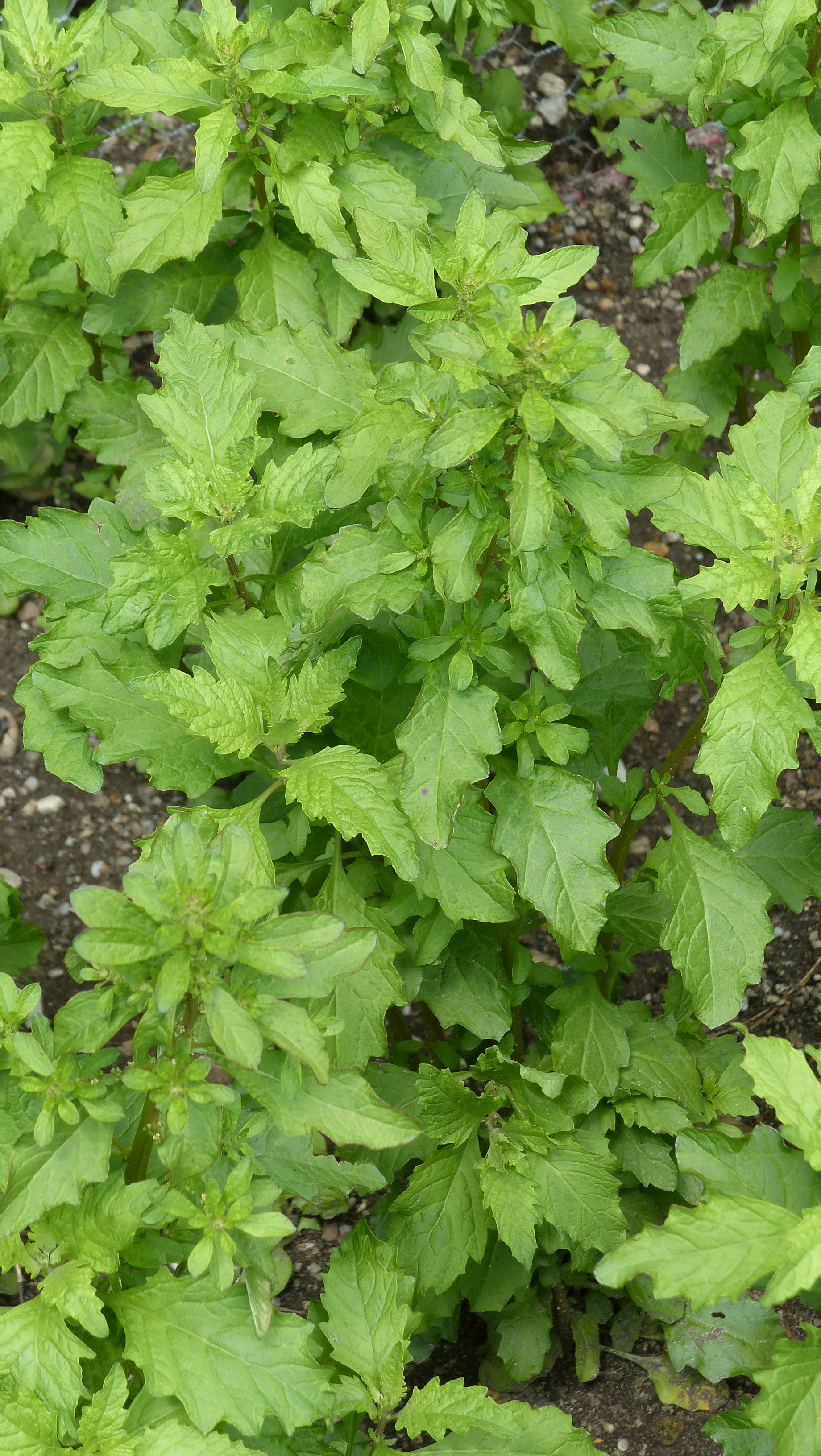Jesuit's tea
(Dysphania ambrosioides)

Description
Dysphania ambrosioides, formerly Chenopodium ambrosioides, known as Jesuit's tea, Mexican-tea,payqu (paico), epazote, mastruz, or herba sanctæ Mariæ, is an annual or short-lived perennial herb native to Central America, South America, and southern Mexico. Dysphania ambrosioides is an annual or short-lived perennial plant (herb), growing to 1.2 m (3 ft 11 in) tall, irregularly branched, with oblong-lanceolate leaves up to 12 cm (4+1⁄2 in) long. The flowers are small and green, produced in a branched panicle at the apex of the stem. As well as in its native areas, it is grown in warm temperate to subtropical areas of Europe and the United States (Missouri, New England, Eastern United States),sometimes becoming an invasive weed. The species was described in 1753 by Carl Linnaeus as Chenopodium ambrosioides. Some researchers treated it as a highly polymorphic species with several subspecies. Today these are considered as their own species of genus Dysphania (e.g. American wormseed, Chenopodium ambrosioides var. anthelminticum is now accepted as Dysphania anthelmintica). The generic name Dysphania traditionally was applied in the 1930s to some species endemic to Australia. Placement and rank of this taxon have ranged from a mere section in Chenopodium to the sole genus of a separate family Dysphaniaceae, or a representative of Illicebraceae. The close affinity of Dysphania to "glandular" species of Chenopodium sensu lato is now evident. Ideally collected before going to seed, D. ambrosioides is used as a leaf vegetable, herb, and herbal tea for its pungent flavor. Raw, it has a resinous, medicinal pungency, similar to oregano, anise, fennel, or even tarragon, but stronger. The fragrance of D. ambrosioides is strong and unique. A common analogy is to turpentine or creosote. It has also been compared to citrus, savory, and mint. Although it is traditionally used with black beans for flavor and its antiflatulent properties, it is also sometimes used to flavor other traditional Mexican dishes: it can be used to season quesadillas and sopes (especially those containing huitlacoche), soups, mole de olla, tamales with cheese and chili peppers, chilaquiles, eggs and potatoes, and enchiladas. It is often used as an herb in fried white rice, and it is an important ingredient for making the green salsa for chilaquiles.
Taxonomic tree:







